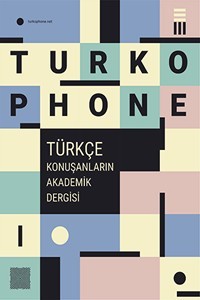Filmler Yabancı Dil Öğretiminde Nasıl Etkin Bir Şekilde Kullanılabilir?
Filmlerin ve dizilerin tüm Dünya’da ilgi ve merakla izlendiği
bilinmektedir. Dil sınıflarında filmlerden ve dizilerden yardım almak,
öğrencilerin bu dile yönelik dil hassasiyeti kazanmalarına ve dört dil
becerisinin gelişimine önemli bir katkı sağlayacaktır. Bu çalışmada, filmlerin
dil sınıflarında nasıl etkin bir şekilde kullanılabileceğine dair sorulara
yanıtlar aranacaktır: Didaktik filmlerin seçiminde nelere dikkat edilmelidir ve
hangi ölçütler kullanılmalıdır? Dil sınıfında kullanılacak film sekansları
nasıl öğretici hale getirilebilir? Film sekanslarının dil öğretimine ne gibi
somut katkıları olabilir? Altyazı yöntemlerinden ve transkripsiyon
tekniklerinden nasıl yararlanılabilir? Ritim ve hız bağlamında film ve
dizilerde geçen sözlü ifadelerin daha iyi anlaşılması nasıl sağlanabilir?
Çalışmanın bu alanda araştırma yürütecek kişilere katkı sağlayacağı ve yabancı
dil öğretiminde örnek teşkil edeceği düşünülmektedir.
Anahtar Kelimeler:
Film, altyazı, yabancı dil öğretimi
How Can Films Be Used Effectively in Foreign Language Teaching?
It is known that films and series are
watched with interest and curiosity all over the world. Films and series in
language classes will help students gain language sensitivity for this language
and contribute to the development of four language skills. In this study,
questions will be sought on how cinema can be used effectively in language
classes: What should be considered and what criteria should be used in the
selection of didactic films? How can the film sequences used in the language
class be instructed? What concrete contributions do film sequences have for
language teaching? How to use subtitle methods and transcription techniques?
How can a better understanding of oral expressions in films and sequences be
achieved in the context of rhythm and speed? It is thought that this study will
contribute to the people who will conduct research in this field and will serve
as an example in foreign language teaching.
Keywords:
Film, subtitle, foreign language teaching,
___
- Bellanger, G. (1977). Le cinéma dans la classe. Bruxelles: Casterman.
- Chauvin, S. (2010). Les trois vies des tueurs, Siodmak, Siegel et la fiction. Paris: Rouge Profond.
- Compte, C. (1993). La vidéo en classe de langue. Paris: Hachette.
- Coşkun, O. (2016). “Türkçenin Yabancı Dil Olarak Öğretiminde Görsel-İşitsel Kayıtlarla Çevriyazı Uygulamaları / Interpretation Applications with Audiovisual Records in Turkish Teaching to Foreigners: Transcription Process”, TURKISH STUDIES -International Periodical for the Languages, Literature and History of Turkish or Turkic-, ISSN: 1308-2140, (Prof. Dr. Hayati Akyol Armağanı), Volume 11/3 Winter 2016, ANKARA/TURKEY, www.turkishstudies.net, DOI Number: http://dx.doi.org/10.7827/TurkishStudies.9418, p. 661-678.
- Coşkun, O; Demirkan, M. (2016). Türkçe’nin Yabancı Dil Olarak Öğretiminde Dinleme Becerisini Geliştirmede Web Radyo Ve Podcast Uygulamaları, Turkophone.
- Demircioğlu, İ. (2007). “Tarih Öğretiminde Filmlerin Yeri ve Önemi”, Bilig, (42): 77-93.
- Dick, B. (1990). Anatomy of film. New York: St. Martins Press.
- Fuzellier, E. (1957). « Possibilité d’un enseignement du cinéma ». Enfance 10 n° 3: 377-382. DOI : 10.3406/enfan.1957.1365 adresinden erişildi.
- Gaudreault, A. & F. Jost. (1990). Le récit cinématographique. Paris: Nathan.
- Lancien, T. (1986). Le document vidéo. Paris: CLE International.
- Letort, D. (2010). Du film noir au néo-noir (1941-2008) : mythes et stéréotypes de l’Amérique. Paris: L’Harmattan.
- Metz, C. (1977). Langage et cinéma Paris: Albatros.
- Muraire, A. (1985). Les utilisations du cinéma dans l’enseignement des langues (anglais notamment) au niveau avancé de l’enseignement secondaire. Rapport de l’atelier 11 ayant eu lieu au Centre international d’études pédagogiques, Sèvres « Apprentissage et enseignement des langues vivantes aux fins de communication: ateliers internationaux pour les formateurs d’enseignants de langues vivantes ». Édité par le Conseil de l’Europe.
- ISSN: 2148-6808
- Başlangıç: 2014
- Yayıncı: Bekir İNCE
